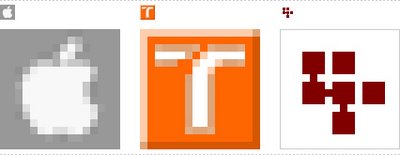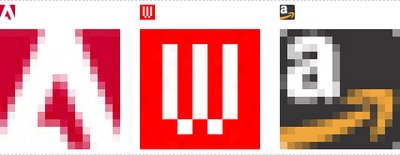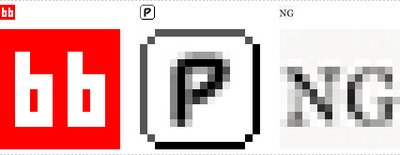
There are not to many options available when designing within a 16-pixel square grid. If you are a organisation which has a suitable symbol within your brand identity system you can use that, as shown by the Apple, Taxi Regulator and 37 Signals example favicons above. If that option is not available, the next most useful approach is some variant of monogram. In this regard the use of a favicon is similar to a publisher’s identity identity monogram at the base of the book’s spine. Take a look along your bookself, the most effective publisers' marks are often single letters such as Phiadon. One recognisably distinct character from an organisation's logotype works well, the Adobe A, the Wired W and the Amazon A below are good examples.

Individual bloggers have two choices of monogram. They can derive a monogram from the name of their blog: in the case of Thoughtport some combination of TP. BoingBoing and Plasticbag above represent that approach. The other prevalent practise is to use the initials of their name and surname, such as Tom Peters’ TP! and Neil Gaiman’s NG.

Based on that reasoning, and given that AK reads a little too much like the sound of somebody choking, the letter A is the basis for my shiney new bespoke favicon. Using the lowercase glyph felt like an affectation. Choosing an appropriate PostScript sanserif typeface and anti-aliasing looked too insubstantial for me. After that exhaustive (er, ten-minutes at lunchtime) design process I eventually settled on a retro three-colour solid-pixel A, inspired by memories of the on-screen font from my original introduction to computing on my 1984-era ZX Spectrum.

A! Nice work on the site it's looking really slick now. I like.
ReplyDeleteApparently Windows XP has a tiny program hidden in its depths which will let you edit and create fonts, icons and logos. Called Eudcedit.
ReplyDeleteGo to Run in the Start Menu, type eudcedit and click OK. After that, you're on your own.